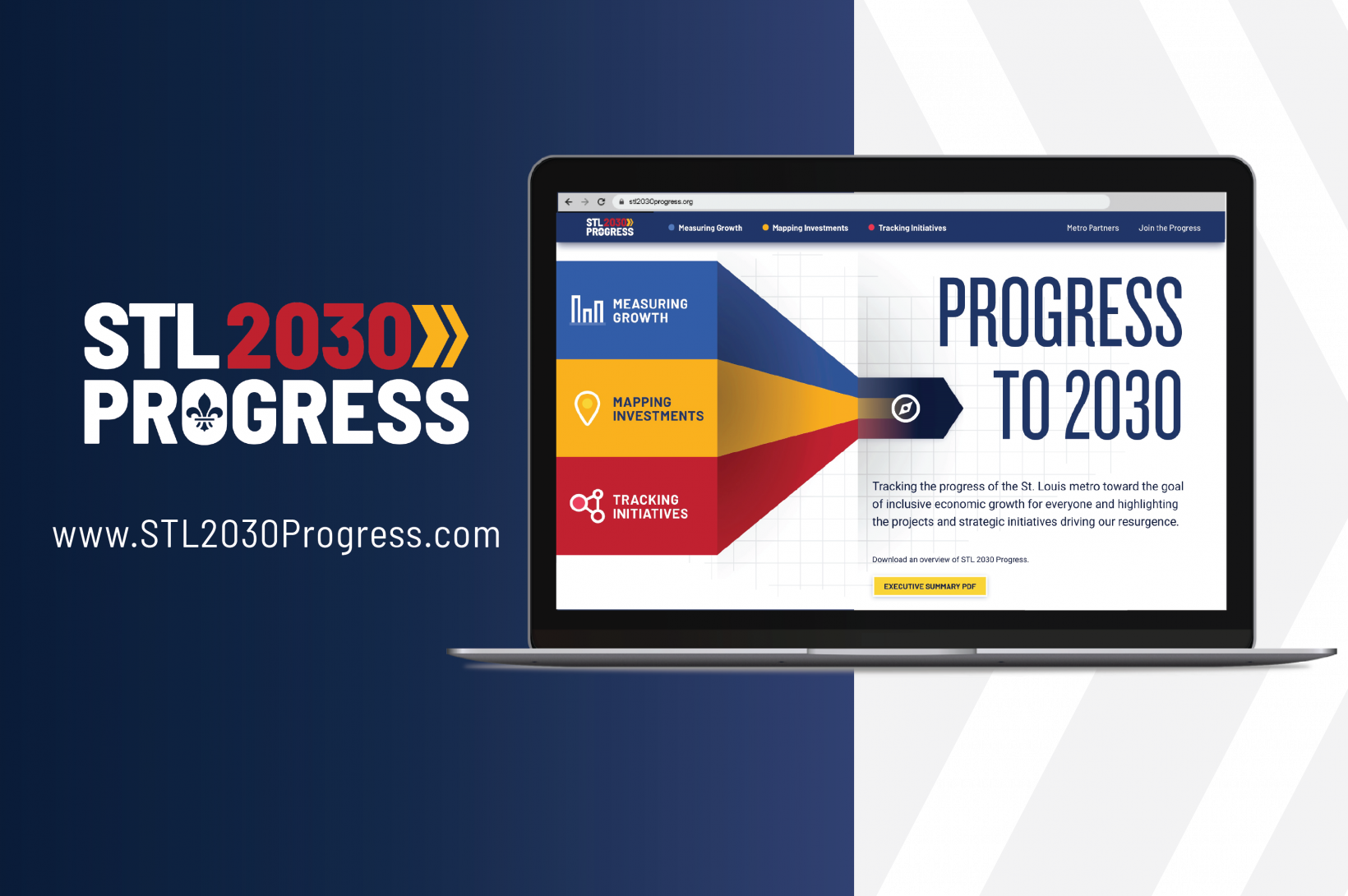
To help the 15-county St. Louis metro visualize its progress toward newly set inclusive economic growth targets, St. Louis leaders have launched a new initiative and online resource, STL 2030 Progress, that is being called “a model every other metro area in the country should follow.”
“This work is nationally significant,” said nationally renowned urban policy expert Bruce Katz, co-author of The New Localism: How Cities Can Thrive in the Age of Populism, and Founder, New Localism Associates, which helped craft the STL 2030 Jobs Plan. “What St. Louis is doing on inclusive economic growth is a model every other metro area in the country should follow.”
Targets for Inclusive Economic Growth
In rolling out STL 2030 Progress, metro leaders announced targets for four core inclusive economic growth metrics — the “North Star” metrics for inclusive economic growth — for the metro to work toward by the end of the year 2030.
“These North Star metrics will answer the questions ‘are we growing?’ and ‘is that growth inclusive?’” said Greater St. Louis, Inc. Chief Strategy Officer Sam Murphey. “With specific goals to work towards and a resource like STL 2030 Progress to measure our progress, we hope to answer ‘yes’ to both those questions at the end of this decade.”
The North Star metrics for the St. Louis metro and the targets announced for them are (all through 2030):
- Population growth – 0.7% average annual growth (would add 180,000 people to the St. Louis metro).
- GDP growth – 2.0% average annual growth in the metro’s GDP.
- Median household income – decrease the Black-to-white household income gap by 50% (would result in an increase in average Black household income of $18,000); 4.4% increase in average annual growth (would result in an increase of $33,000 in average household income).
- Home ownership rate – decrease the Black-to-white home ownership gap by 30% while keeping the overall metro home ownership rate above 71%.
STL2030Progress.com: The Online Resource
STL 2030 Progress is the regional effort called for in the STL 2030 Jobs Plan to measure the metro’s progress on inclusive growth and was developed by Greater St. Louis, Inc. in collaboration with representatives from all 15 counties in the St. Louis metropolitan area.
“It sets a new bar for regional collaboration,” said Katz.
The website — STL2030Progress.com — is a data-driven toolkit consisting of three main components:
- Metro Inclusive Growth Metrics. This tool establishes a metrics framework, sets targets, and measures the progress of the 15-county bi-state St. Louis metro towards inclusive growth. The metrics tool identifies key macroeconomic data and targets for inclusive growth; measures St. Louis’ performance against peer metros and within the St. Louis metro by county across multiple dimensions impacting inclusive growth; emphasizes reducing racial disparities across key outcome metrics; and sets top-level targets for 2030 around “North Star” inclusive growth metrics. Where possible, all metrics are disaggregated by key inclusivity lenses.
- Capital Projects Map. The Capital Projects Map depicts economy-shaping capital projects and assets across the 15-county bi-state St. Louis metro and visualizes the geography of economic transformation and growth. The GIS map showcases St. Louis’ economic resurgence and geospatial thought leadership. This map is intended to highlight momentum, raise awareness, and spur dialogue and collaboration around how and where our region is investing to build the inclusive economy of the future. A metro-scale collaboration across public and private partners, the map showcases the potential of cross-border open data initiatives. The map includes projects that were planned, under construction, or completed since the start of the decade (January 2021) as well as existing assets and other contextual data layers.
- Strategic Initiatives Tracker. The STL 2030 Jobs Plan lays out a 10-year roadmap to boost economic growth, increase quality jobs, and reduce racial disparities across the metro. To achieve these goals, STL 2030 Progress aggregates and highlights major net-new public and private efforts that are advancing recommended initiatives. The website’s tracking initiatives tool aims to facilitate collaboration and help elected officials, business and civic leaders, funders, and other stakeholders across the region and country gain awareness of the breadth and depth of activities that are underway so that they can better advance regional efforts driving inclusive growth.
The STL 2030 Progress website is dynamic and will be updated on an ongoing basis. Visitors to the website can submit their own ideas and information to be added.
